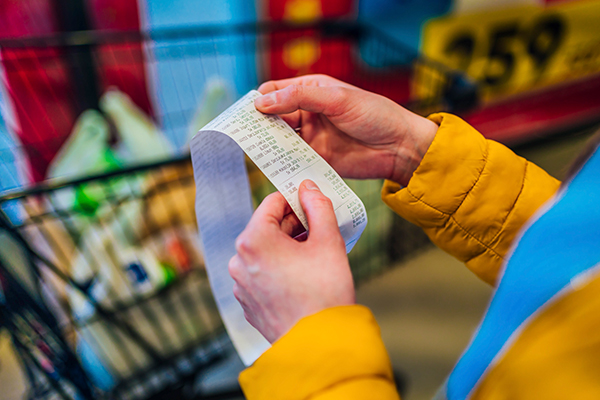A recent study from climate action group Wrap and Mayonnaise brand Hellmans has revealed that food waste is costing Australians more than $2,000 each year, as reported by Guardian Australia.
The reasons for this waste vary, with 43% of the survey’s respondents saying they aren’t sure where to get tips to avoid wasting food, 25% saying they get bored with eating the same meals, and 18% saying they struggle to cook food before its expiry date.
We spoke with Sustainability Victoria’s Kate Pahlow to understand how to combat some of this food waste and ensure that households in Australia are getting the most out of their grocery shop.
How to reduce food waste in your home
Take stock
Before you shop, take a look at what you already have and plan your meals around what needs using up. You could also consider creating a ‘use it up’ shelf in the fridge, so food that needs to be eaten first is easy to spot.
Get technical
Shopping lists have come a long way, with new apps designed specifically to make your shop easier and more efficient. Sustainability Victoria recommends AnyList, Listonic, and Mealime.
Double up on your ingredients
Try picking recipes that double up on your ingredients. Need a tub of cream for a pasta dish on Monday? Plan a meal that uses the other half of the same ingredient for another day that week, like a potato bake.
Your freezer is your friend
If your leftovers won’t be eaten in the next 3–4 days, freeze them immediately to avoid food spoiling.
Make over your leftovers
Plan to have a leftovers meal at least once per week. There are plenty of ways to give your leftovers a makeover, like using stale bread in a salad or overripe fruit in a smoothie.
Learn about food storage
Making sure your food is stored correctly will help keep it fresher for longer. Check your fridge temperature is between 1–3 degrees Celsius and the freezer temperature is minus 18 degrees Celsius.
Get involved
Get everyone in your household involved with meal planning, preparation and cooking. Letting your family suggest what they’d like to eat can be fun, and knowing who’s going to be home for dinner that week helps you plan your meals accordingly.
Stick to your list
When you do need to shop, create a shopping list and stick to it. This helps ensure you only buy what you need and you’re not tempted to impulse buy unnecessary items.
Compost
The best way to deal with food waste is to not create it in the first place. But if you do have waste, put it to good use rather than in the rubbish bin. Composting is a good option for our food and garden scraps, and will create nutrient-rich soil you can use in your garden. If you got the space, use that nutrient-rich soil to grow some of your own herbs or vegetables.

Like what you're reading?
Explore more articles like this one in our Discover Issue of Live Better magazine.
Using up your leftovers
The most binned food items in Australian households are vegetables, bread, fruits, and bagged salads. Here are some ideas on how to save your ingredients – and your grocery money – from going to waste.
Vegetables
- Use up any sad looking vegetables at the bottom of your veggie crisper by chucking them in a stir fry. Carrots, snow peas, beans, mushrooms, broccoli, Asian greens, corn and capsicum are all stir fry favourites.
- Help your vegetables get to know one another better by blending them together in a soup or stew. Just add some stock and your favourite spices.
- Add layers of thinly sliced vegetables to lasagnes and other oven-baked meals.
- Easily incorporate grated vegetables like carrot and zucchini into pastas, breakfast fritters, or salads.
- Get creative with your pizza toppings. Broccoli on a pizza isn’t as strange as it sounds once you add some lemon, garlic and chilli to it.
- Start pickling! Cucumber and red onions are popular choices, but you can make quick pickled carrots, cauliflower, asparagus… the list goes on. Just make sure you sterilise your jars first.
Bread
- Cut your leftover bread up into small cubes, bake them in the oven, and then use the pieces as croutons to top your soups and salads.
- Make stale bread the hero of your dish by using it in a bready salad like an Italian Panzanella with tomatoes, olive oil and basil.
- Use slightly stale white bread to make a classic bread and butter pudding.
Fruit
- Chop up your favourite fruits, combine them in a bowl and enjoy them as a fruit salad.
- Make jam with pectin-rich fruits like oranges, kumquats, apples and pears.
- Bake your fruits into muffins, cakes or pies.
- Blend overripe fruit together with some yogurt and milk to make a fruit smoothie.
Greens and bagged salads
- Sauté your greens in the fry pan with some lemon and garlic and add them as a side to your next meal. Spinach, kale and chard all work well.
- Pop your greens into a blender with some favourite frozen fruits and some yogurt or milk to make a green juice or fruit smoothie.
- Use leftover cos or iceberg lettuce to make lettuce wraps, such as san choy bow.
- Add chopped and wilted spinach, rocket, or chard leaves to pasta sauces.
Leftovers
- Great for when you’re cooking in bulk, a meal swap with a friend or neighbour can help add variety to your week and help make sure you don’t get sick of eating the same dish night after night.
- Make your leftovers feel brand new by swapping the toppings or sides between meals. For example, one pot of bean mix can be eaten with rice one night, then baked as nachos and enjoyed with cheese and guacamole the next night. If you still have leftovers the following day, spread it on toast and serve it up with some fried eggs and hot sauce for breakfast.

